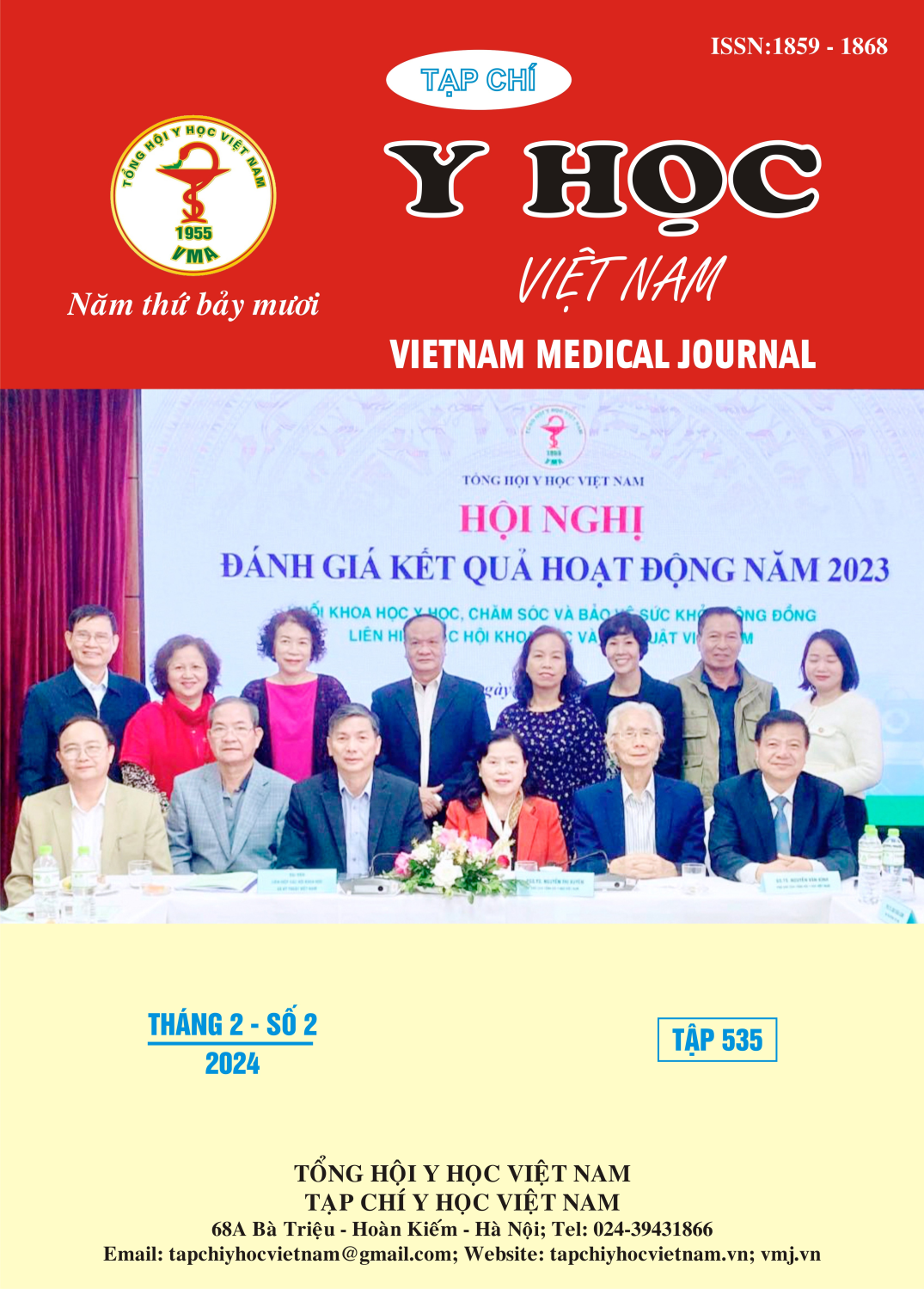KHẢO SÁT TÍNH TOÀN VẸN PHÂN TỬ DNA TỰ DO (CCFDNA) TRONG MÁU Ở BỆNH NHÂN UNG THƯ PHỔI KHÔNG TẾ BÀO NHỎ
Nội dung chính của bài viết
Tóm tắt
Mục tiêu: Khảo sát nồng độ và tính toàn vẹn của ccfDNA trong huyết tương, từ đó đánh giá mối liên quan với một số đặc điểm của bệnh nhân ung thư phổi không tế bào nhỏ (UTPKTBN). Đối tượng và phương pháp nghiên cứu:Nghiên cứu bệnh-chứng với 50 bệnh nhân được chẩn đoán UTPKTBN và 50 người nhóm chứng không mắc các bệnh lý ung thư và bệnh lý tự miễn hệ thống kèm theo được tuyển chọn vào nghiên cứu tại khoa khám bệnh và khoa ung bướu bệnh viện đa khoa tỉnh Bắc Ninh trong thời gian từ tháng 8/2022 đến tháng 10/2023. Kết quả: Nồng độ trung bình của ALU-115 trong máu bệnh nhân (81,25±48,36 ng/mL) cao hơn so với nhóm chứng (8,63±17,89 ng/mL), nồng độ ALU-247 ở bệnh nhân (51,75±40,25 ng/mL) cao hơn so với nhóm chứng (2,67±3,39 ng/mL), tỷ lệ ALU-247/ALU-115 ở nhóm bệnh nhân (0,65±0,25) cao hơn so với nhóm chứng (0,52±0,27). Khi phân tích giá trị chẩn đoán bằng đường cong ROC cho thấy ALU-247(AUC=96,692%, p<0,001, Se: 94%, Sp: 96%), ALU-115 (96,8%, p<0,001, Se: 100%, Sp: 86%), tỉ lệ ALU-247/ALU-115 (64,12%, p=0,015, Se: 86%, Sp: 46%) đều có giá trị cao cho chẩn đoán UTPKTBN. Kết luận: Nồng độ của các dấu ấn sinh học ALU-115, ALU-247 và tỉ lệ ALU-247/ALU-115 tăng ở bệnh nhân UTPKTBN cũng như có xu hướng tăng theo giai đoạn của bệnh. Các dấu ấn sinh học này có tiềm năng trở thành xét nghiệm trong chẩn đoán sớm và theo dõi điều trị bệnh UTPKTBN
Chi tiết bài viết
Tài liệu tham khảo
2. Molina JR, Yang P, Cassivi SD, Schild SE, Adjei AA. Non–Small Cell Lung Cancer: Epidemiology, Risk Factors, Treatment, and Survivorship. Mayo Clin Proc Mayo Clin. 2008;83(5):584-594.
3. Jemal A, Bray F, Center MM, Ferlay J, Ward E, Forman D. Global cancer statistics. CA Cancer J Clin. 2011;61(2):69-90. doi:10.3322/caac.20107
4. Emerging molecular biomarkers—blood-based strategies to detect and monitor cancer | Nature Reviews Clinical Oncology. Accessed October 30, 2023. https://www.nature. com/articles/nrclinonc.2010.220
5. De Mattos-Arruda L, Cortes J, Santarpia L, et al. Circulating tumour cells and cell-free DNA as tools for managing breast cancer. Nat Rev Clin Oncol. 2013;10(7): 377-389. doi: 10.1038/ nrclinonc.2013.80
6. Increased Integrity of Free Circulating DNA in Sera of Patients with Colorectal or Periampullary Cancer: Direct Quantitative PCR for ALU Repeats | Clinical Chemistry | Oxford Academic. Accessed October 30, 2023. https://academic.oup.com/clinchem/article/52/6/1062/5627032
7. Hussein NA, Mohamed SN, Ahmed MA. Plasma ALU-247, ALU-115, and cfDNA Integrity as Diagnostic and Prognostic Biomarkers for Breast Cancer. Appl Biochem Biotechnol. 2019;187(3): 1028-1045. doi:10.1007/s12010-018-2858-4
8. Ren S, Ren X, Guo H, et al. Concentration and integrity indexes of urine cell-free DNA as promising biomarkers for early lung cancer diagnosis. Pers Med. 2021;18(2):129-139. doi:10.2217/pme-2020-0019
9. Waki K, Yokomizo K, Yoshiyama K, Takamori S, Komatsu N, Yamada A. Integrity of circulating cell-free DNA as a prognostic biomarker for vaccine therapy in patients with nonsmall cell lung cancer. Immunopharmacol Immunotoxicol. 2021;43(2):176-182. doi:10. 1080/08923973.2021.1872619


